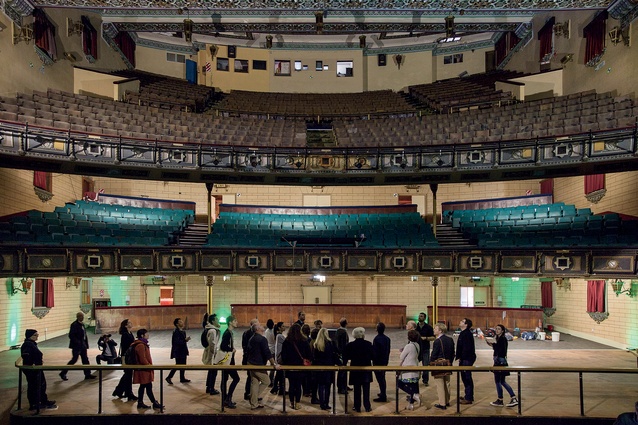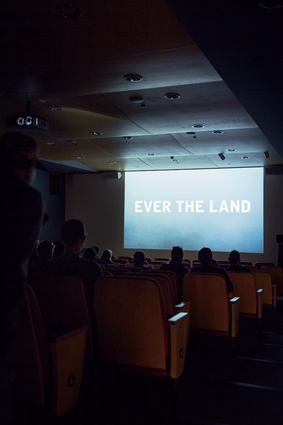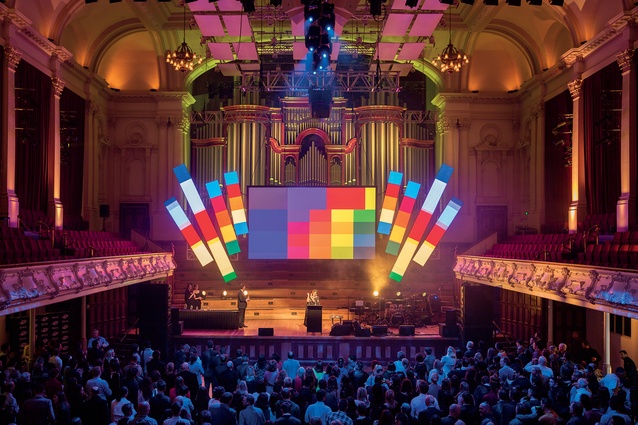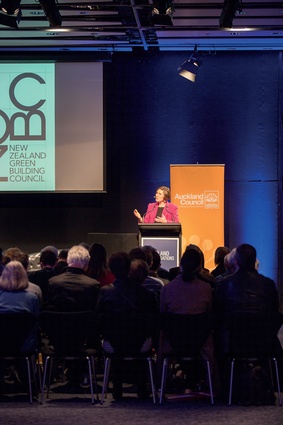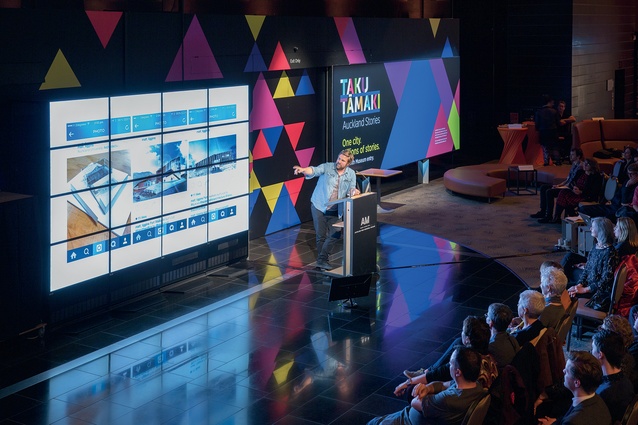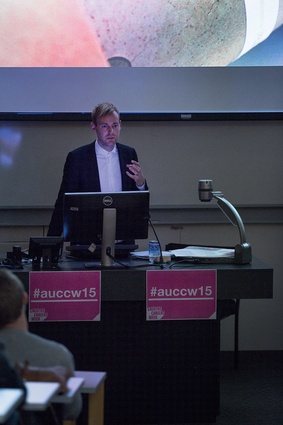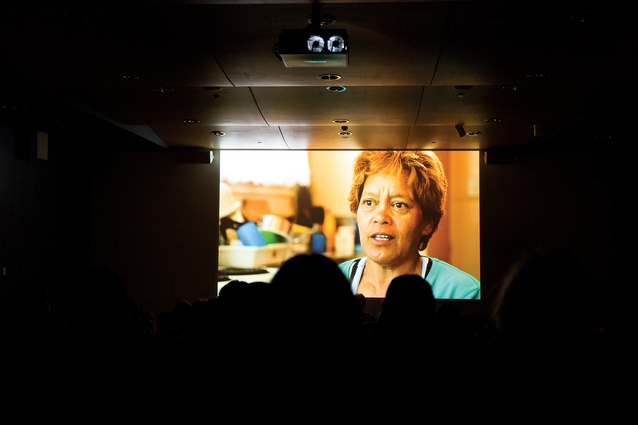Auckland Architecture Week 2015
Auckland’s 2015 Architecture Week hosted an epic and compelling line-up of almost 20 events - lectures, exhibitions, tours and performances - plugging into many of the existing festivals and celebrations across the city.
The week began with a surprisingly intimate talk by Nat Cheshire, who described Cheshire Architects’ journey and the motivating fear of forever being relegated with the title of ‘Pip’s son’. The firm is pushing the envelope by reframing architectural questions and rejecting the assumption that other design disciplines have some secret knowledge to which architects aren’t privy.
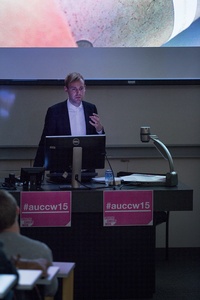
This has allowed them to move into other fields like furniture, product and graphic design. Despite his well-earned success, Cheshire perpetuates the myth of the architect. Having come to understand the alchemic joy of architecture, he described how his lifestyle now revolves around the same strenuous hours that he disliked when he was watching his father suffer through his childhood.
For the audience, predominantly made up of students, it was disconcerting to hear someone we admire declare that, because of his love of architecture, “There’s not really anything else, not even surfing”.
In Wednesday night’s Auckland Conversation, Ludo Campbell-Reid (Auckland Council) and Vernon Tava (Waitemata Local Board) collectively proposed a city without cars - or, at least, offered up the odd street to the idea. Tava also spoke of the “almost forgotten and soon to be thrillingly revived” Airedale Street, which will cater to a grander scale of residential properties.
It will be interesting to see how many car parks they’ll allow for each new build, attesting to their long-term investment in car-free streets. Both were followed by the remarkable acoustic contributions of Chris Day (Marshall Day Acoustics) and his work on the Philharmonie de Paris (Jean Nouvel).
With a budget that escalated to around €387 million and a “brutal” 40-page acoustic brief, the 2,400-seat concert hall proved to be quite a challenge for Day and his team but it was one they trumped in remarkable fashion. With donut-style seating that encircles the centre stage, the interior “hushes you completely”, both acoustically and visually. It’s also good to note that the sound is sensational even for those in the cheap seats, with Day proclaiming a mere two per cent difference in sound quality for those seats, compared to their pricier counterparts.

The pairing of the two conversations ambitiously alluded to the possibilities for Auckland’s centre, particularly the Aotea Quarter, although, presumably, there will need to be a little more compromise on the budget in this side of town.
The colour awards at the Auckland Town Hall were held in spectacular format following the Auckland conversations on Tuesday night. Resene generously contributed to numerous events throughout the week, serving paint sample pots of jaffas on almost every seat, bench or bar. However, it seems a shame, on a night such as this, a time to honour all things luminous, that the stock was not nearly sweet enough. Perhaps we could propose a ban on all shades of grey - then we truly might have something to celebrate, aside from resale.
However, there was a handful of standout works, most notably Myers Park Playspace by Helen Kerr and Haylea Muir (Isthmus) and, a personal favourite, the Haumoana Public Toilets by Brent Scott (Citrus Studio Architecture) - a beachside convenience perfectly perched in the sand, saturated entirely in red.
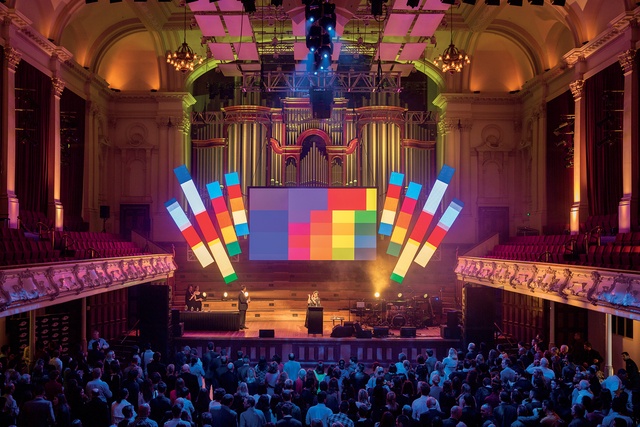
The Bungalow Festival opened with a night of Pecha Kucha held in the cosy Mount Eden Bowling Club. A large crowd, representing a wide range of age groups gathered to hear a discussion of the details, development and history of this clearly well-loved typology. There was much talk of porches, outdoor living and window types, including some debate over the exact definition of a fanlight. The talks provided a pleasurable look at our local built heritage and at how the detailing and development of the bungalow was indicative of the social and cultural life of the time period in which they were built.
It’s official, Architecture+Women.NZ are unstoppable! Its dedicated team continue to contribute to the profession enormously, with no signs of slowing down. Saturday offered a full day’s spread consisting of song, storytelling, speed-dating and the launch of their fourth book in three years. Elisapeta Heta led ‘He Wei: A song?’ with her usual patience and good sense of humour.
This was followed by the launch of The Architecture of the Expanded Field, edited by Sarah Treadwell and Lucy Treep, a much-anticipated book that has surfaced as a result of the hugely successful 2013 symposium with the same title. Then, the ‘Wiki-Lounge’ offered recordings of the overlooked history of women in architecture, as represented on Wikipedia. The day finished up with ‘Date Night’, an industry mentoring event, which was well attended and proved to be a highlight of the week for many.

Though a 24-Hour Design Competition sounds relatively self-explanatory, SANNZ subverted the expectations of the eighty-five students who entered with a number of unanticipated twists. Students were treated to a lecture by Julie Stout, a series of quick-fire design workshops led by prominent local architects and a trip to the Auckland Museum for an evening of Pecha Kucha.
Once these sources of potential inspiration had been offered, the brief was announced but, even then, it included a key caveat. In order to discourage the teams from staying up all night, an element of chance was added in the form of a spinning wheel of fortune, which decided the medium each team would present in but was only spun early on Saturday morning.
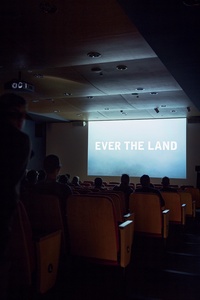
With just seven hours to produce a project, the randomly assigned mediums fueled creative presentations using collages, films, rap and theatrical performances. The work was of stunning quality and many were left wondering why we don’t always share our projects in such inventive ways.
Architecture New Zealand and Resene’s mini-film festival at Auckland Art Gallery Toi o Tāmaki on Sunday presented two vastly different faces of New Zealand’s colonial legacy for Māori. Ever the Land, a documentary about Te Wharehou o Tūhoe, presented New Zealand’s first ‘living building’, while A Place to Call Home followed the sale of state housing in Glen Innes.
Seeing the two films together was a pertinent reminder of the symbolic power of architecture, representing, on one hand, the social and environmental aspirations of the Tūhoe people and, on the other, the violent front line of state-sponsored gentrification.
We were lucky enough to have a Q&A after the screenings with Briar March, the filmmaker behind A Place to Call Home, and Fleur Palmer, the architect involved in the relocation of state houses to a Māori Trust Initiative in the far North. This well-executed and attended event was a compelling and potent way to finish the week.
Auckland Architecture Week was organised by the Auckland Branch of the NZIA, supported by AUT University, GIB, Resene and The Warren Trust.

